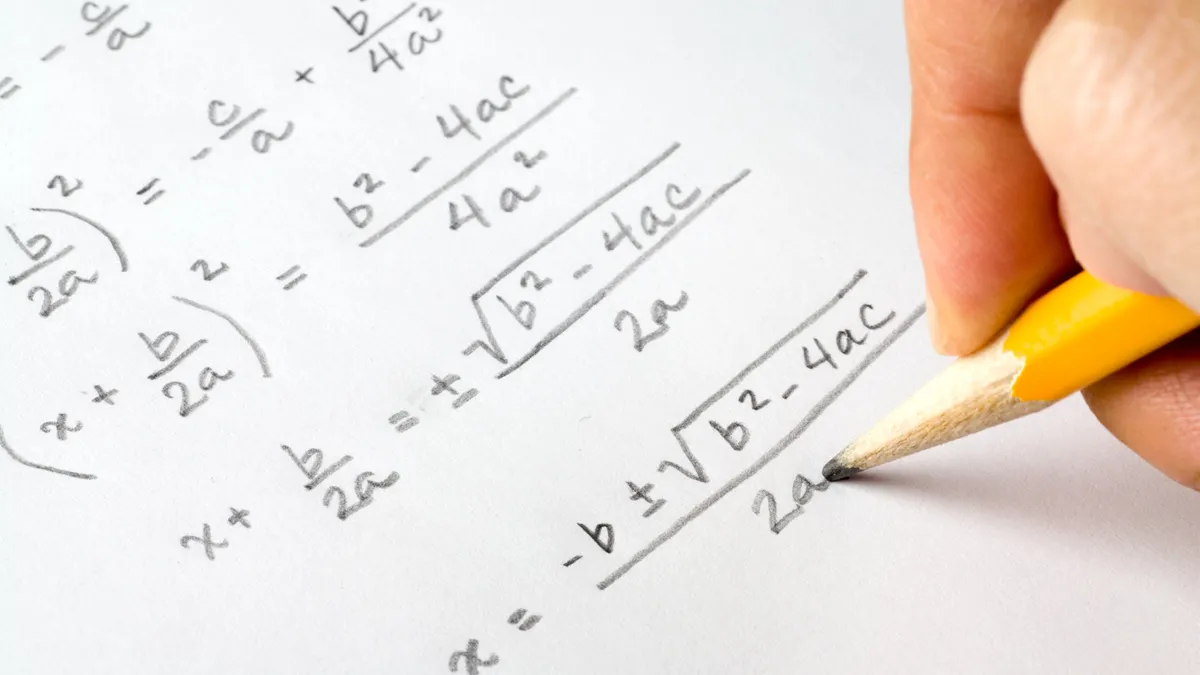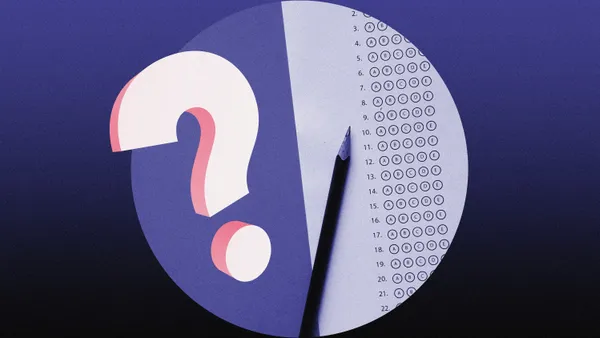Dive Brief:
- A slim majority — 58% — of schools in the U.S. offer algebra by the 8th grade, according to a study released Tuesday by assessment and research organization NWEA.
- Access to 8th grade algebra is much lower in rural areas, high-poverty schools and schools with more than 75% Black or Latino students, the study said, with high-achieving Black students "systematically less likely" than other high achievers to be placed in 8th-grade algebra when it is offered.
- The report suggested that placement practices, rather than readiness, were key drivers for the inequity. “Most schools use a mix of standardized test scores, teacher recommendations, and parent requests” to make placement decisions, the report stated, adding that this method can introduce bias.
Dive Insight:
The study analyzed data from about 162,000 8th graders across 22 states, examining whether schools offer algebra by 8th grade and who gets placed into these classes when they’re available.
NWEA’s report stressed that students who take early algebra are more likely to do well in advanced high school math, pursue STEM majors in college and earn more over their lifetimes. However, “researchers and policymakers have debated who should take algebra in middle school, how early is too early, and how to balance academic rigor with student readiness,” the report said.
To that end, a bifurcation has occurred, with some states pushing for universal early algebra and other states scaling back in response to concerns about tracking and equity.
“As a result, despite its documented benefits, access to eighth-grade algebra varies widely, often mirroring the same socioeconomic and racial divides that shape so many other educational opportunities,” NWEA said.
The likelihood of access to 8th grade algebra depends on where students live and what kind of school they attend. For example, students in high-poverty schools — defined as those where greater than 75% of students are eligible for free and reduced-price lunch — experience fewer opportunities to take these classes.
In addition, when the course is available, more than half of Asian students enrolled, compared with 22% of Latino students and 17% of Black students.
“These gaps show that availability alone doesn’t guarantee access,” the report said. “For many students, especially those from historically marginalized groups, the barrier isn’t whether their school offers algebra, it’s whether they’re given the chance to take it.”
Even among high-achieving students, enrollment gaps persist. The report found that among top-quintile students, 84% of Asian students and 68% of White and Latino students were enrolled in algebra, compared to only 60% of Black students.
To counter the placement decision bias that has led to some of these disparities, NWEA recommended universal screening, as well as automatically enrolling high-achieving students into advanced math pathways. The report said this approach would ensure that placement decisions "are based on readiness, not on referrals or resources,” increasing both fairness and efficiency.
“It reduces the administrative burden of subjective placement decisions, saves staff time, and ensures more students get the opportunities they deserve,” the report said, noting that several states including Colorado, Nevada, North Carolina, Texas, and Washington have made progress in identifying and supporting “high-potential” students from underrepresented backgrounds using that method.
A September study from the Center on Reinventing Public Education that analyzed National Assessment of Educational Progress data found that U.S. math assessment performance peaked in 2013. It has declined since then, however, with the steepest declines showing in girls, low-income students, Black and Latine students, students with disabilities and multilingual learners.
But an October report from NWEA showed modest math recovery among elementary and middle school students on the organization’s MAP Growth assessments compared to pre-pandemic performances, suggesting learning recovery in the subject is gaining momentum.







 Dive Awards
Dive Awards








